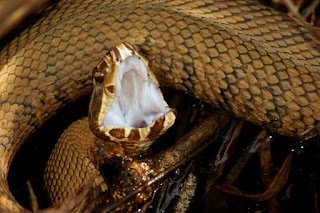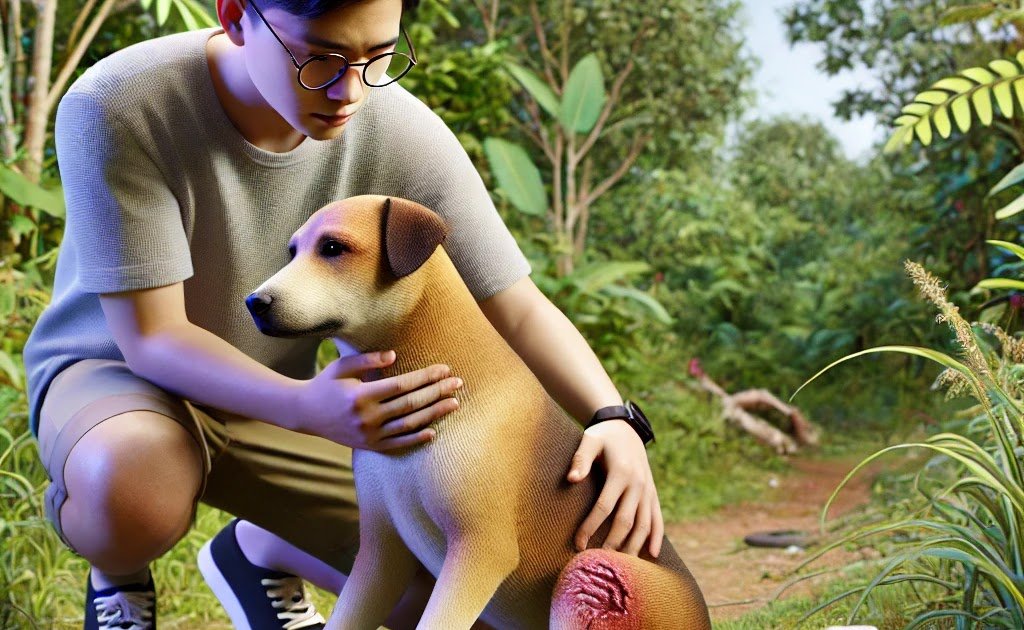Every pet owner knows that their furry friend can sometimes find problems, but what happens if your dog is bitten by a snake? It can be a scary situation, but understanding the signs and taking quick action can make all the difference.
Recognizes the signs of a snake bite
When a dog is bitten by a snake, the first step is to know what to look for. Common characters include:
- Swelling: The area around the bite may be pushing up. It could look like a balloon! Swelling is often the first visible indicator of a hose bite and it can be displayed within minutes of the incident. The swelling can spread quickly, so even if the bite mark is small, the area around it can be significantly enlarged.
- Pain: Your dog may whine or refuse to let you touch the wounded area. Pain may vary depending on the type of hose and the location of the bit. Some dogs may react more aggressively by trying to lick or bite the area, while others may become unusual still to avoid aggravating the pain.
- Bleeding: You may notice blood, either from the bite itself, or if the snake’s hands punctured the skin deeply. The severity of the bleeding can depend on how close the bite is on a large blood vessel and whether the hands of the snake was long enough to reach it.
- Settlement: If your dog suddenly seems tired and is less excited to go for a walk, it can be a bit. Lethargy is a mentioned symptom because it indicates that the venom begins to affect your dog’s system. It is important to monitor your dog closely if you notice a sudden decrease in energy levels.
- Trouble: In some cases, a snake bite can cause serious reactions, including breathing problems. This is especially dangerous and suggests that the poison affects your dog’s respiratory system. Instant veterinary care is crucial if you notice signs of work breathing, such as rapid shallow breathing, breathing or coughing.
If you notice any of these signs it is important to act quickly! The faster you react, the better the result of your dog. Recognizing the symptoms of a snake bite can be challenging, especially if the incident happened outdoors and you didn’t see it. Some snake bites, especially from non-venome snakes, may not show all these symptoms. However, it is always safer to fail on the side of caution and seek veterinary care if you suspect a snake bite.
Types of snakes biting dogs
Not every hose is dangerous, but some can pose significant risks to dogs. Understanding which snakes most likely bite your dog can help you take the necessary precautions. Ordinary toxic snakes include:
- Rattling snakes: Known for their distinctive rattle they can deliver an ugly bite. Rattlesnakes are perhaps the most notorious toxic snakes in the United States. They are typically found in deserts, grasslands and forests. Their bite is very toxic and can cause severe tissue damage, leading to potential long -term complications if not treated immediately.
- Copper heads: Their Coppery color can merge with leaves, making them harder to spot. Copper heads are found more commonly in wooded areas and are known for their striking camouflage. They are generally less aggressive than rattlesnakes, but will bite if they feel threatened or corner. Their poison is hemotoxic, which means it can cause extensive tissue damage and pain, although rarely fatal.

- Cottonmouths (watermo -moccasins): Often found near water, these snakes can be aggressive if threatened. Cottonmouths are semi-aquatic snakes that thrive in wetlands, swamps and rivers. They are very defensive and will often stand their reason rather than escape. Their poison is cytotoxic and can cause severe tissue destruction.

Knowing your local snake species helps you understand the potential risks when your dog is outside. Toxic snake bites require immediate medical attention, but it is also important to remember that non-friendly snakes can also bite. While these bites are less dangerous, they can still cause infection and pain.
Instant steps after a snake bite
So your dog was just bitten. What now? First, keep you calm – your puppy can feel your stress. Panic can aggravate the situation by causing your dog to become more excited, which can increase the spread of poison if the bite was from a toxic snake.
-
Keep your dog quiet: Movement can spread the venom. Help your dog become as quiet as possible until you can get to a veterinarian. If your dog is small enough, carry them to prevent them from moving around. For larger dogs, try to keep them calm and limit their movement as much as possible.
-
Avoid sucking poison out: It’s an old myth that this works. Instead, focus on getting to a professional. Attempts to suck Venom can do more harm than good, and it is unlikely to remove a significant amount of poison. Modern medical treatment is the best solution.
-
Keep the bite area lower than the heart: This can slow down the spread of poison. Gravity can help slow down the venom of poison through the bloodstream. If the bite is on one leg, try to keep the leg lower than your dog’s heart while transporting them to the vet.
Time is the essence. The sooner you get your dog to a veterinarian, the better the chances of a full recovery. It is worth noting that even with a non-friendly snake bite, infection is a risk, so veterinary care is always recommended.
Treatment options for snake bite
Once at the vet, your dog is likely to undergo multiple treatments based on the hose type and severity of the bidet. Here’s what you could expect:
-
Antivenoma: If the snake was toxic, your dog may receive antivenoma to counteract the effects. Antivist is the most crucial treatment of toxic snake bites. It works by neutralizing the toxins of the poison and preventing them from causing further damage to your dog’s body. The faster antivenoma is administered, the more effective it will be.
-
Pain management: Bites can hurt! Veterinarians can prescribe medication to ease your dog’s pain and discomfort. Pain management is important not only for your dog’s comfort, but also to help reduce stress, which can be harmful during improvement.
-
Wound care: The veterinarian cleanses the bite area and checks for infection. Proper wound care is essential to prevent secondary infections, which can complicate improvement. The veterinarian can also manage antibiotics if there is a risk of infection.
-
Monitoring and supportive care: Your dog may need to be monitored for several hours or even overnight, depending on the severity of the bite. Supporting care may include intravenous fluids to prevent shock, medication to control swelling and in some cases oxygen therapy if breathing is compromised.
Recovery time may vary, but with proper care, most dogs jump back. However, recovery is not always immediate, and follow -up visits may be necessary to make sure your dog heals properly. The long -term effect of a snake bite may include lingering pain, tissue damage and in severe cases loss of function in the affected limb.
Prevention of hose bite
Prevention is better than cure. Here are a few ways to keep your four -legged friend sure of:
-
Monitor outdoor time: Always keep an eye on your dog when outside, especially in areas known for snakes. Supervision is especially important in the warmer months when hoses are more active. Avoid letting your dog roam freely in areas where snakes are common.
-
Keep paths clear: Clear garbage and tall grass where snakes can hide. Snakes are more likely to be found in areas with plenty of cover, such as tall grass, piles of leaves or rocks. Keeping your farm tidy and free of such hiding places can reduce the likelihood of meeting a snake.
-
Educate yourself: Knowing what snakes look like can help you avoid dangerous meetings. Get familiar with the snakes that live in your region and learn to identify both toxic and non-friendly species. This knowledge can be invaluable when evaluating a potential event in snake bites.
-
Train your dog: Teaching your dog to avoid snakes can be life -saving. Some training programs specifically focus on snake times that can help your dog recognize and avoid snakes. In addition, reinforcement of commands such as “leave it” can prevent your dog from approaching a snake of curiosity.
Conclusion: Become aware and take action
Seeing your dog with a snake bite is the things of nightmares, but being informed can allow you to act quickly. Keep an eye on signs, know your local snakes, and make sure your dog’s safety in the big outdoors. Dogs bring joy and camaraderie, and it is up to us to protect them from nature’s lurking dangers.
In the end, while snake bites are a serious threat, they can also be prevented with the right precautions. By remaining vigilant and prepared, you can reduce the risk of a snake bite and ensure that if the worst happens, you will be ready to respond effectively. Your dog is addicted to you for protection, so being knowledgeable and proactive is the best way to keep them safe and healthy in any environment.
